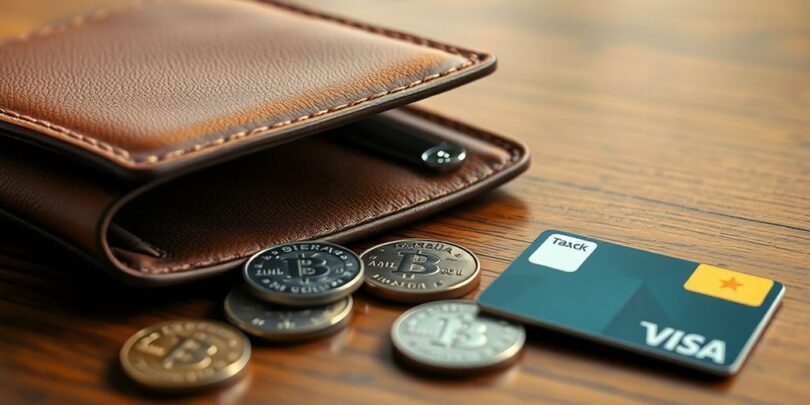Alright, listen up, mates! We’re gonna chat about something super important for your wallet: overdrafts. You know, those times your bank lets you spend more than you actually have? Sounds handy, right? Well, not always. In Australia, these little financial helpers can turn into a real headache if you’re not careful. We’re talking sneaky fees and charges that can really sting. So, grab a cuppa, and let’s figure out how to dodge those bank blunders and keep your cash where it belongs.
Key Takeaways
- Overdrafts can hit you with unexpected fees, so always know what you’re signing up for.
- A good budget and tracking your spending are your best mates for avoiding overdrafts.
- Having an emergency fund means you won’t need to rely on credit when things go wrong.
- Credit cards aren’t free money; using them wisely keeps your finances healthy.
- Checking your credit report helps you spot errors and protect your financial future.
Understanding Overdrafts Down Under
What Exactly Are Overdrafts?
Okay, so what’s the deal with overdrafts, right? Basically, it’s like this: your bank lets you spend more money than you actually have in your account. Think of it as a short-term loan. You’re dipping into the bank’s funds to cover a payment. It’s handy in a pinch, but definitely not free money. Banks offer this service to help you avoid declined transactions, which can be a lifesaver sometimes. But, like borrowing from your mate, there are usually conditions and costs involved.
The Hidden Costs of Overdrafts
Right, so here’s where it gets a bit tricky. Overdrafts aren’t just a free pass to spend more. They come with fees and interest, and these can really add up if you’re not careful. Banks charge daily interest on overdraft balances, with average rates around 10.51% annually as of 2025. Plus, there are often hefty fees every time you go over your limit. It’s easy to get caught in a cycle of debt if you’re constantly relying on your overdraft. Here’s a quick look at potential costs:
| Fee Type | Average Cost |
|---|---|
| Overdraft Fee | $30 – $40 |
| Interest Rate | 10% – 20% p.a. |
| Extended Overdraft | Additional fees |
Spotting Dodgy Overdraft Fees
Alright, so how do you make sure you’re not getting ripped off? First, keep a close eye on your bank statements. Check for any unexpected or excessive fees. Banks are supposed to be transparent about their fees, but sometimes they can be buried in the fine print. If you see something that doesn’t look right, don’t be afraid to question it. Call your bank and ask for an explanation. If they can’t provide a satisfactory answer, consider switching to a bank with fairer banking practises. Also, be wary of overdraft protection services that automatically transfer funds from a credit card or other account to cover overdrafts, as these can also trigger fees and interest charges.
Overdrafts can be a useful tool if used responsibly, but it’s important to understand the costs involved and to avoid relying on them as a regular source of funds. Always check your account balance before making a purchase, and consider setting up alerts to notify you when your balance is low.
Avoiding Overdraft Traps
Overdrafts can be a real pain in the backside, especially when you’re trying to keep your finances in order. It’s easy to fall into the trap of relying on them, but with a bit of planning, you can steer clear of those pesky fees and keep your bank balance healthy.
Mastering Your Budget to Prevent Overdrafts
Creating a budget is the first line of defence against overdrafts. It’s about knowing where your money is going each month. Start by listing all your income sources and then itemise your expenses – rent, bills, groceries, the lot. There are plenty of budgeting apps out there that can help, or you can just use a simple spreadsheet. The key is to be honest with yourself about your spending habits. Once you have a clear picture, you can identify areas where you can cut back and free up some cash.
Tracking Your Spending Like a Pro
Tracking your spending is like keeping tabs on your diet – you need to know what you’re consuming to make informed choices. Use a budgeting app, a notebook, or even just your bank statements to monitor where your money is going. This helps you identify those sneaky little expenses that add up over time. Plus, it’s a great way to see if you’re sticking to your budget. If you find yourself constantly going over budget in certain areas, it’s time to reassess your spending habits. You can use bill monitoring apps to help you remember deadlines on your smartphone/tablet/computer.
Building a Solid Emergency Fund
Life throws curveballs, and that’s where an emergency fund comes in handy. Aim to save at least three to six months’ worth of living expenses in a separate, easily accessible account. This way, if you lose your job, your car breaks down, or you’re hit with an unexpected medical bill, you won’t have to rely on overdrafts or credit cards to cover the costs. Start small, even $20 a week can make a difference. Think of it as your financial safety net. It’s also important to consider frugal tips to help you save money without sacrificing your lifestyle.
Having an emergency fund gives you peace of mind and prevents you from spiralling into debt when unexpected expenses arise. It’s a buffer that allows you to handle life’s surprises without resorting to high-interest loans or overdrafts.
Smart Banking Habits for Aussies
Paying Bills on Time, Every Time
Missing bill payments? Crikey, that’s a quick way to throw your hard-earned dosh down the drain! Late fees and penalties can really sting, and before you know it, you’re in a right pickle. Set up reminders on your phone or use a bill-tracking app to stay on top of things.
- Automate bill payments where possible. Set ’em and forget ’em!
- Use a calendar app to remind you of due dates.
- Consider a bill monitoring app to keep track of everything in one place.
Paying your bills on time isn’t just about avoiding fees; it’s about building a solid financial reputation. A good payment history can open doors to better interest rates on loans and credit cards down the track.
Don’t Rely on Credit for Everyday Buys
Using your credit card for every little thing might seem convenient, but it’s a slippery slope. Remember, credit is borrowed money, and you’ll be paying interest on it. Before you know it, you’ve racked up a huge balance that’s tough to manage. It’s easy to fall into the trap of impulsive shopping when you’re not physically handing over cash.
- Use cash or debit cards for everyday purchases.
- Track your spending to see where your money is going.
- Set a budget and stick to it.
Regularly Reviewing Your Bank Statements
How often do you actually look at your bank statements? If the answer is ‘not often enough’, you’re not alone. But regularly checking your statements is crucial for spotting errors, fraudulent activity, or just understanding where your money is going. It’s like a financial health check – quick, easy, and can save you a lot of grief in the long run. You might even find some sneaky bank fees you didn’t know about!
- Check your statements at least once a month.
- Look for any unusual transactions.
- Keep an eye out for unexpected fees or charges.
Here’s a quick table to illustrate the importance:
| Scenario | Potential Consequence |
|---|---|
| Unnoticed Error | Overpaying bills, losing money |
| Fraudulent Activity | Identity theft, financial loss |
| Unidentified Fees | Unnecessary expenses, reduced savings |
Credit Card Caution and Overdrafts
The Perils of Cash Advances
Cash advances on your credit card might seem like a quick fix when you’re short on funds, but they’re often a one-way ticket to financial trouble. Unlike regular purchases, cash advances usually come with higher interest rates that start accruing immediately. Plus, there’s often a fee involved, making it an expensive way to access cash. Think of it this way: you’re not just borrowing money; you’re paying a premium for the privilege. It’s almost always better to explore other options, like dipping into your emergency fund or finding frugal tips, before resorting to a cash advance.
- Higher interest rates from the get-go.
- Transaction fees add to the cost.
- No interest-free period like regular purchases.
Cash advances can quickly spiral out of control. The high interest rates and fees make it difficult to pay back the borrowed amount, leading to a cycle of debt. It’s a financial trap best avoided.
Why Minimum Payments Are a Trap
Making only the minimum payment on your credit card might seem manageable in the short term, but it’s a surefire way to rack up significant interest charges over time. The interest accumulates on the remaining balance, meaning you’re paying more for the things you’ve already bought. It can take years to pay off even a small balance if you’re only making the minimum payment. Try to pay more than the minimum whenever possible to reduce the amount of interest you pay and get out of debt faster.
Consider this example:
| Item | Cost | Minimum Payment | Time to Pay Off | Total Interest Paid |
|---|---|---|---|---|
| New TV | $1,000 | $25 | Many Years | Significant |
| Weekend Away | $500 | $15 | Years | Hefty |
| New Washing Machine | $2,000 | $50 | A Very Long Time | A Lot |
Setting Sensible Credit Limits
It’s easy to get carried away when you have a high credit limit, but just because you can spend a certain amount doesn’t mean you should. A high credit limit can create a false sense of security and encourage overspending, potentially leading to debt problems and even impacting your credit score. Setting a sensible credit limit that aligns with your actual spending habits and ability to repay is a smart move. Here’s how to do it:
- Assess your monthly income and expenses.
- Determine how much you can realistically afford to repay each month.
- Set your credit limit accordingly, erring on the side of caution.
Protecting Your Credit Score
Your credit score is like your financial reputation, mate. It tells lenders how reliable you are when it comes to borrowing money. A good score can unlock better interest rates on loans and credit cards, while a bad one can make it harder to get approved for anything. So, keeping it in good nick is pretty important.
The Impact of Overdrafts on Your Credit
Overdrafts can sneakily impact your credit score. While a one-off might not seem like a big deal, regularly dipping into your overdraft can signal to lenders that you’re struggling to manage your finances. This can lower your credit score over time. Think of it like this: lenders want to see that you’re a safe bet, and relying on overdrafts suggests you might not be.
Checking Your Credit Report Regularly
It’s a smart move to check your credit report at least once a year. You can get a free copy from several credit reporting agencies. Look for any errors or inaccuracies that could be dragging your score down. Things like incorrect payment dates, accounts you don’t recognise, or even identity theft can all mess with your credit rating. Catching these early means you can sort them out before they cause too much damage. It’s a bit like getting a financial health check – preventative and potentially saving you a lot of hassle down the line.
Fixing Errors on Your Credit File
Spotting an error on your credit file? Don’t stress, you can dispute it. Contact the credit reporting agency and provide them with evidence to support your claim. They’re legally obliged to investigate and correct any mistakes. It might take a bit of time, but it’s worth it to ensure your credit report accurately reflects your financial history. Think of it as cleaning up your financial record – getting rid of any blemishes that aren’t really yours.
It’s important to remember that building a good credit score takes time and consistent effort. There’s no quick fix, but by being mindful of your spending, paying your bills on time, and regularly checking your credit report, you can keep your score in good shape and unlock better financial opportunities.
Navigating Bank Fees and Charges

Understanding Annual Credit Card Fees
Right, so you’ve got a credit card. Good on ya! But have you actually looked at what you’re paying each year just to have the thing? Annual credit card fees can really sting, especially if you’re not using the card much. These fees are basically the bank’s way of charging you for the ‘privilege’ of using their credit. Some cards have higher fees because they offer fancy rewards programmes, like frequent flyer points or cashback. But if you’re not racking up enough points to offset the fee, you’re basically throwing money away. Time to do some maths, mate!
Avoiding Late Payment Penalties
Late fees are the absolute worst. They’re like a slap in the face from your bank, reminding you that you stuffed up. And they’re not cheap either! To dodge these pesky penalties, set up automatic payments. Seriously, it’s a lifesaver. Most banks let you schedule payments from your savings account to cover your credit card or loan repayments. Another tip? Mark your payment due dates on a calendar or use a budgeting app to keep track. A little bit of planning can save you a whole lot of dosh.
Comparing Interest Rates on Financial Products
Okay, let’s talk interest rates. Whether you’re eyeing off a personal loan, a credit card, or even a term deposit, understanding interest rates is key. The interest rate is the cost of borrowing money (or the reward for lending it to the bank). When comparing financial products, don’t just look at the headline rate. Check the comparison rate, which includes fees and charges, giving you a truer picture of the overall cost. Also, be aware of introductory rates that might jump up after a certain period. Read the fine print, folks!
It’s easy to get caught up in the excitement of a new credit card or loan, but taking the time to understand the fees and interest rates can save you a lot of money in the long run. Don’t be afraid to shop around and compare different products to find the best deal for your needs. Your wallet will thank you for it.
When Things Go Pear-Shaped

Look, we all have those moments where our finances take a turn for the worse. It’s part of life, especially in Australia where the cost of living can be a real killer. The important thing is knowing what to do when you’re staring down the barrel of an overdraft or other financial woes. Don’t panic! Let’s look at some strategies to get you back on track.
Dealing with Unexpected Expenses
Life throws curveballs, doesn’t it? The car needs urgent repairs, the fridge dies, or you’re hit with a hefty medical bill. These things happen. The key is to have a plan in place to handle these unexpected costs without resorting to dodgy overdrafts.
Here’s a few ideas:
- Tap into your emergency fund: This is exactly what it’s for! Even a small emergency fund can make a big difference.
- Re-evaluate your budget: See where you can temporarily cut back on non-essential spending to free up some cash. Maybe skip the takeaway coffees for a few weeks and make your own.
- Consider a payment plan: Many service providers are willing to work with you to set up a payment plan, especially for larger bills. It never hurts to ask!
It’s easy to feel overwhelmed when unexpected expenses pop up. Remember to take a deep breath, assess the situation calmly, and explore all your options before making any rash decisions. Don’t be afraid to ask for help or advice from a trusted friend or family member.
Seeking Help for Financial Hardship
Sometimes, the situation is more serious than just a one-off expense. If you’re struggling to make ends meet on a regular basis, it’s time to seek help. There’s no shame in admitting you need assistance, and there are plenty of resources available in Australia.
Consider these options:
- Financial Counselling: Free and confidential financial counselling services can help you assess your situation, develop a budget, and explore debt management options. They can be a real lifeline when you’re feeling lost.
- Government Assistance: Centrelink offers a range of payments and services to support people experiencing financial hardship. Check their website to see if you’re eligible for any assistance.
- Community Organisations: Many local community organisations offer food banks, clothing assistance, and other forms of support to those in need. A quick Google search can help you find resources in your area.
Negotiating with Your Bank
Your bank isn’t necessarily the enemy. In fact, they may be willing to work with you if you’re struggling to manage your overdraft or other debts. It’s always worth having a conversation to see what options are available.
Here’s what you can try:
- Ask for a temporary overdraft limit increase: If you’re facing a short-term cash flow problem, your bank may be willing to increase your overdraft limit temporarily to help you get through it. Just be sure you have a plan to pay it back quickly.
- Request a fee waiver: If you’ve been hit with unexpected overdraft fees, ask your bank to waive them. They may be more likely to do so if you have a good track record and explain your situation honestly.
- Explore debt consolidation options: If you have multiple debts, your bank may be able to offer a debt consolidation loan to simplify your repayments and potentially lower your interest rate. This could be a good way to manage your budgeting tips and get back on track.
Wrapping It Up
So, there you have it. Dodgy overdrafts can really mess with your money, but they don’t have to. Just remember to keep an eye on your bank balance, know what your bank charges, and try to have a bit of a buffer in your account. It’s all about being a bit switched on with your finances. If you get into a bit of a pickle, don’t just ignore it. Talk to your bank, or get some advice. A little bit of effort now can save you a whole lot of stress and money down the track. Stay sharp, Aussies!
Frequently Asked Questions
What’s an overdraft, mate?
An overdraft happens when you spend more money than you actually have in your bank account. It’s like borrowing a small amount from the bank, but it usually comes with fees and interest, making that ‘borrowed’ money more expensive than you’d expect.
Can overdrafts mess up my credit score?
Yep, they can. If you keep going into overdraft or don’t pay back the money quickly, it can show up on your credit report. This might make it harder to get loans, credit cards, or even rent a place in the future.
How can I avoid getting an overdraft?
The best way is to keep a close eye on your money. Know what’s coming in and what’s going out. Setting up alerts from your bank can also help, so you get a heads-up before your account goes into the red.
What kind of fees do banks charge for overdrafts?
Banks can charge different fees for overdrafts, like a fee each time you overdraw, or interest on the amount you’ve overdrawn. Some might even charge a daily fee until you put money back in. Always check your bank’s terms and conditions.
What if I can’t pay back an overdraft?
If you’re really struggling, don’t just ignore it. Talk to your bank as soon as possible. They might be able to work out a payment plan or offer some advice. There are also free financial counsellors around Australia who can help you get back on track.
Why is a budget so important for avoiding overdrafts?
A good budget helps you see where your money goes. When you know your spending habits, you can plan better and make sure you always have enough cash for your bills and daily needs, stopping you from accidentally overdrawing.








